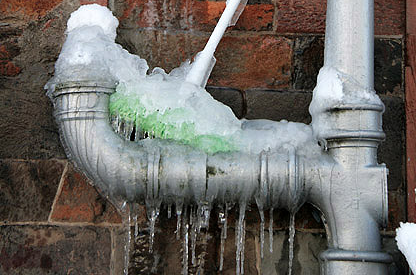Protecting Your Pipes from Freezing Issues: Critical Approaches
Protecting Your Pipes from Freezing Issues: Critical Approaches
Blog Article
Nearly everybody maintains their own unique piece of advice with regards to Preventing and dealing with frozen pipes.

Winter can damage your pipes, specifically by freezing pipes. Right here's how to prevent it from taking place and what to do if it does.
Introduction
As temperatures decrease, the threat of icy pipes boosts, possibly resulting in expensive fixings and water damage. Understanding just how to avoid frozen pipes is vital for house owners in chilly environments.
Understanding Icy Pipes
What causes pipes to ice up?
Pipelines ice up when exposed to temperatures below 32 ° F (0 ° C) for prolonged periods. As water inside the pipes freezes, it expands, taxing the pipeline wall surfaces and possibly triggering them to break.
Risks and damages
Icy pipelines can lead to water supply disruptions, residential property damage, and costly repair work. Burst pipelines can flooding homes and cause substantial architectural damages.
Indications of Frozen Piping
Recognizing icy pipelines early can stop them from breaking.
How to identify frozen pipes
Seek lowered water circulation from taps, unusual smells or noises from pipes, and noticeable frost on revealed pipes.
Avoidance Tips
Protecting at risk pipes
Wrap pipes in insulation sleeves or utilize heat tape to safeguard them from freezing temperatures. Concentrate on pipelines in unheated or external locations of the home.
Heating methods
Maintain indoor spaces adequately heated, particularly locations with plumbing. Open cupboard doors to allow warm air to flow around pipelines under sinks.
Safeguarding Outdoor Pipes
Yard hoses and outside taps
Detach and drain pipes yard hose pipes before wintertime. Install frost-proof spigots or cover outdoor taps with protected caps.
What to Do If Your Pipes Freeze
Immediate activities to take
If you suspect frozen pipes, maintain taps available to soothe stress as the ice thaws. Make use of a hairdryer or towels taken in warm water to thaw pipes slowly.
Long-Term Solutions
Structural adjustments
Think about rerouting pipelines away from exterior wall surfaces or unheated locations. Include extra insulation to attics, cellars, and crawl spaces.
Updating insulation
Purchase high-grade insulation for pipes, attic rooms, and walls. Correct insulation aids keep constant temperature levels and lowers the danger of frozen pipelines.
Final thought
Preventing icy pipelines needs aggressive actions and fast reactions. By comprehending the reasons, indicators, and preventive measures, homeowners can safeguard their pipes throughout cold weather.
5 Ways to Prevent Frozen Pipes
Drain Outdoor Faucets and Disconnect Hoses
First, close the shut-off valve that controls the flow of water in the pipe to your outdoor faucet. Then, head outside to disconnect and drain your hose and open the outdoor faucet to allow the water to completely drain out of the line. Turn off the faucet when done. Finally, head back to the shut-off valve and drain the remaining water inside the pipe into a bucket or container. Additionally, if you have a home irrigation system, you should consider hiring an expert to clear the system of water each year.
Insulate Pipes
One of the best and most cost-effective methods for preventing frozen water pipes is to wrap your pipes with insulation. This is especially important for areas in your home that aren’t exposed to heat, such as an attic. We suggest using foam sleeves, which can typically be found at your local hardware store.
Keep Heat Running at 65
Your pipes are located inside your walls, and the temperature there is much colder than the rest of the house. To prevent your pipes from freezing, The Insurance Information Institute suggests that you keep your home heated to at least 65 degrees, even when traveling. You may want to invest in smart devices that can keep an eye on the temperature in your home while you’re away.
Leave Water Dripping
Moving water — even a small trickle — can prevent ice from forming inside your pipes. When freezing temps are imminent, start a drip of water from all faucets that serve exposed pipes. Leaving a few faucets running will also help relieve pressure inside the pipes and help prevent a rupture if the water inside freezes.
Open Cupboard Doors
Warm your kitchen and bathroom pipes by opening cupboards and vanities. You should also leave your interior doors ajar to help warm air circulate evenly throughout your home.

As a serious reader on Helpful Tips to Prevent Frozen Pipes this Winter, I figured sharing that piece of content was a good idea. Do you know someone else who is in to the niche? Why not share it. Thanks a bunch for your time. Kindly come by our blog back soon.
Visit Site Report this page